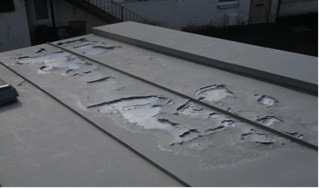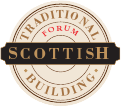NFRC Guidance Regarding Corrosion of Fully Supported Metal Roofing
Guidance provided by National Federation of Roofing Contractors – NFRC Guidance
Fully supported metal roofs have a long and successful history in the UK – traditionally produced in lead and copper but other non-ferrous and ferrous metals including coated steel are used.

The cause has been attributed to condensation being trapped between the outer sheet and the supporting deck.
Zinc and the other metals are highly effective and will resist attack from the eternal elements for many years having developed a corrosion-resistant coating formed from the natural action of rainwater and carbon dioxide. However, conditions to the underside of the sheet are very different where the water is distilled (condensation) and the forming of a protective patina or oxide layer on the metal does not occur. Zinc is particularly vulnerable to attack in this way.
The increased use of warm roof construction over the traditional cold roof in recent years has seemed to correspond with the rise in roof failures.
Following a meeting at the NFRC of representatives from manufacturers, contractors and roofing experts it was felt roofers and the wider industry and designers needs guidance as to the correct procedure to be adopted.
Firstly, water vapour should be prevented from penetrating into the roof build-up by the provision of a fully sealed vapour control layer to the warm side of the insulation whether it is a cold roof or warm roof design. It is particularly vital in a warm roof situation where a rigid insulation board sits on a supporting deck with the metal sheet then lying on the insulation board with a separation layer between.
Secondly, should condensation still occur then it must be allowed to disperse and not be or remain in contact with the metal sheet. This is achieved by providing a vented air space beneath the deck and over the insulation in a cold roof or in a warm roof by laying the sheet on a manufacturer approved underlay that will allow a movement of air to the underside of the sheet.
Thirdly, correct assembly and detailing to manufacturers’ instructions must be strictly adhered to in order to accommodate thermal /wind loading and movements and to prevent leakage. Detail consideration as to the effects ancillary components would have on condensation occurrence and its removal should be made.
Fully supported metal roofs as a system are used by designers to produce aesthetically pleasing roofs that will have a service life of many years. However, the installation of various components by untrained installers without due regard to basic roofing physics in recent years has put the whole concept in peril.
Contractors must understand and engineer out the risks by attendance at manufacturers’ training courses and ensuring that roofs are designed and installed totally in accordance with the manufacturer’s instructions.
Failure to do this will leave contractors to pick up the pieces should problems occur.

No Comments